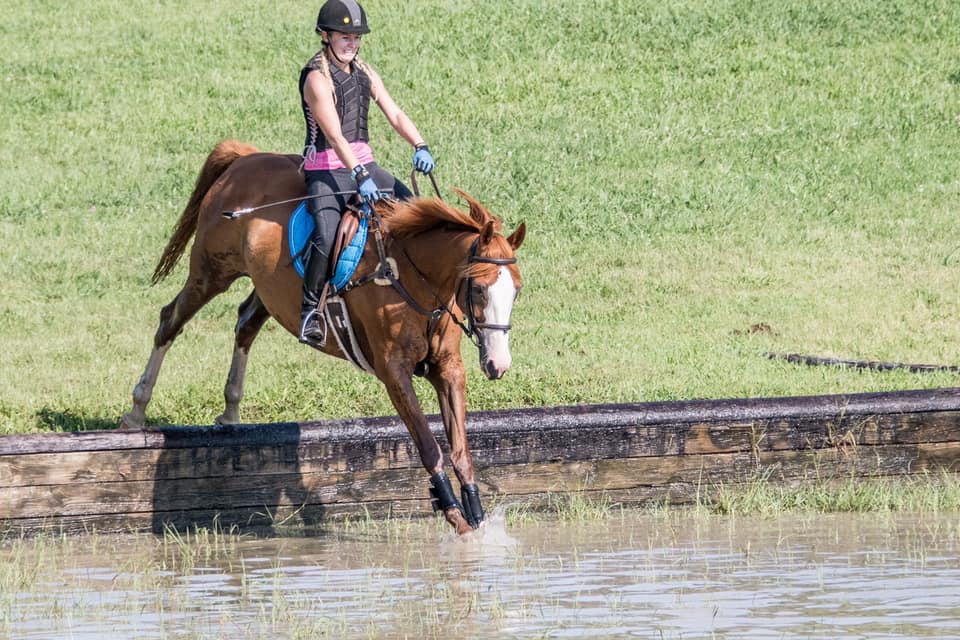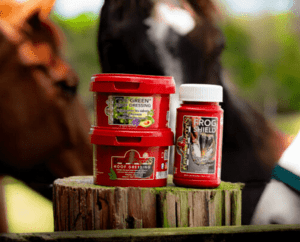Mental Health In The Saddle: Daniel Stewart Clinic Recap

By Courtney Tiedt-Fuller
Mental health is a huge component of all sports, but when your teammate doesn’t speak your language things get a little tougher. When I realized my horse and I were having difficulty communicating because I had too many thoughts running through my head, I knew it was time to enlist the help of a sports psychologist.
Daniel Stewart is considered one of the leading experts in equestrian sports psychology, so when a local barn posted about an upcoming clinic with him, I was quick to sign up.
Held over two days, the clinic was to cover both mental and physical health of the rider. While your horse doesn’t need to be jumping big jumps, he or she does need to be semi-reliable and behaved. The clinic isn’t so much about training your horse as it is to training you, as a rider, how to cope with pressure and mental skills. Katie, my 16.2h chestnut Holsteiner/Thoroughbred cross may be opinionated, but she is well trained, so a friend convinced me she was the perfect partner for the clinic.
Day one began with a 30-minute pre-ride talk where Daniel introduced himself, explained his background and his style of coaching. We were then instructed to mount and he began explaining the exercise and jumping course that was set up.
There were 10 jumps set up in the ring. Each jump was assigned a number 1 through 10 and included combinations such as bending, a regular bending line set
at three strides, corner, an almost 90-degree turn from one jump to another, double, two jumps set in a straight line three strides apart, bounce, two jumps set nine feet apart, and chute, space between jumps where you ride in or out of the chute and then jump a single fence. There were two sets of each combination set up mirroring each other.

Daniel would announce the course for you to ride, but wouldn’t tell you which set of jumps to start. He left that up to you as an added pressure. For example, bounce, double, chute meant you had to ride those three combinations in that order, but which side of the ring didn’t matter.
Once we learned and could ride through those simple instructions he would add more “pressures”. He would tell you, bounce, double, chute, corner, end on an even number fence, and complete within 45 seconds. He would continue to add these pressures until you failed with the goal of teaching you to slow your brain and think when you are under pressure. You should keep riding your horse without getting nervous or anxious.
The results for Katie and I were astounding! When I stopped getting so worked up over her being so opinionated and just did my job as a rider in a black-and-white fashion, my horse chilled out and we got things done. We began working as a team for possibly the first time in our career together.
Day two was a little bit tougher as we were put into teams with another rider where we rode courses in halves with each other and worked on keeping our cool when another person was depending on us. When we failed, we were assigned sit-ups. 100 sit-ups per fault. You don’t want to be the reason your teammate has to do 100 sit-ups, so the pressure was really on.
After the riding portion, we learned about the importance of being physically fit. Daniel understands that riders are busy and can’t spend hours in the gym each day as well as understanding that many gym exercises don’t mimic the movements we do in the saddle. He brought us out to the arena to show us a series of exercises we can complete in under 15 minutes to work all the muscles we need while riding. It
was very similar to CrossFit and surprisingly quite fun!
All in all, the clinic was amazing for me, my riding, and my horse. I didn’t think I would get as much out of it as I did since my horse is known for being a bit too extreme with her opinions and never gives me the ability to really work on myself. I was shocked that by ignoring her and focusing on myself, we worked much better as team. In short, if Daniel Stewart is holding a clinic in your area, run, don’t walk to it!


